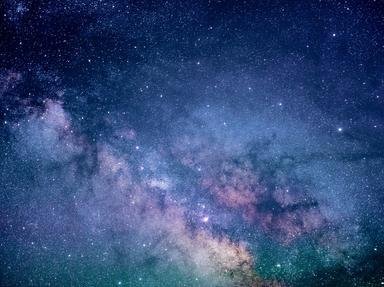Quiz Answer Key and Fun Facts
1. A giant molecular cloud forms, containing thousands of small solar masses.
2. A molecular cloud collapses and fragments.
3. Gas and dust accumulate and a core begins growing, to form a protostar.
4. A protostar blows away the surrounding dust and gas and contracts, becoming a pre-Main Sequence star.
5. The massive star begins nuclear fusion of hydrogen.
6. The star's supply of hydrogen dwindles, but the core heats up enough for helium fusion to begin.
7. The massive star begins burning carbon.
8. The massive star runs out of carbon but is hot enough to burn heavier elements.
9. The star goes supernova.
10. A black hole forms.
Source: Author
lordprescott
This quiz was reviewed by FunTrivia editor
rossian before going online.
Any errors found in FunTrivia content are routinely corrected through our feedback system.
